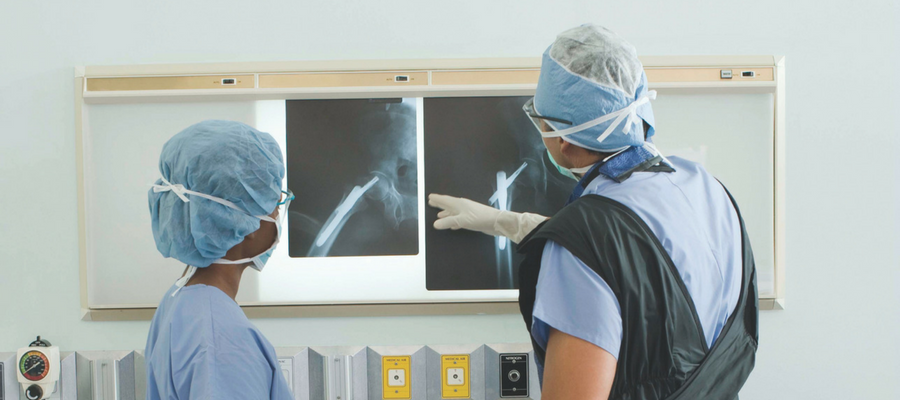
I had a great experience working with the students and staff at Penn State. They brought diverse perspectives and experience to the project. The product stands out because it was thoughtfully crafted and is elegantly utilitarian. With a few minor adjustments, we are set to begin the next phase of exploring real market potential.
The Need
Surgical lead vests must be worn by surgeons, doctors, and nurses at the Hershey Medical Center during surgical procedures to protect against harmful x-ray radiation. Lead aprons weigh from 10 to 20 pounds, and the force transmitted to the knee ranges from 30 to 60 pounds per step. As a result of this weight, most providers have suffered work-related injuries and struggled with osteoarthritis of the knees, neck, and lower back. Orthopedic injuries shorten the length of providers’ careers and impact their overall well-being.
The PennTAP Connection
PennTAP partners with the Penn State College of Engineering’s Learning Factory to find sponsors and scope projects that challenge teams of senior engineering students each semester. Hershey Medical Center is actively involved in innovation research related to medical devices, but is often in need of additional engineering assistance to develop prototype designs. PennTAP assists those doctors and researchers with scoping projects that can benefit from creative designs by student engineering teams.
The Project
The student engineering team was challenged to develop a lead apron support structure that could off-load the weight of the lead. It needed to be flexible to allow wearers to quickly navigate operating room tables, with a full range of motion and bending. The team was also tasked with performing a market analysis and developing a working prototype that could be field-tested and refined.
About the Company
Penn State Milton S. Hershey Medical Center
500 University Drive, Hershey, PA 17022
Dauphin County
The Outcome
Three conceptual designs were created and graded through a rating matrix against the sponsor’s needs of comfort, cost, mobility, deployment time, durability, and manufacturability. The selected concept was then designed through a full CAD mock-up. A full-scale working prototype was fabricated and tested by multiple wearers, and an analysis of vest weight support was completed. The prototype was successful in supporting an average of 143 percent of the lead vest weight. In addition, mobility and range of motion were maintained, while meeting the donning time requirement of 30 seconds or less. The total cost of construction for the new design is approximately $300, significantly less than the desired price point of the sponsor.

